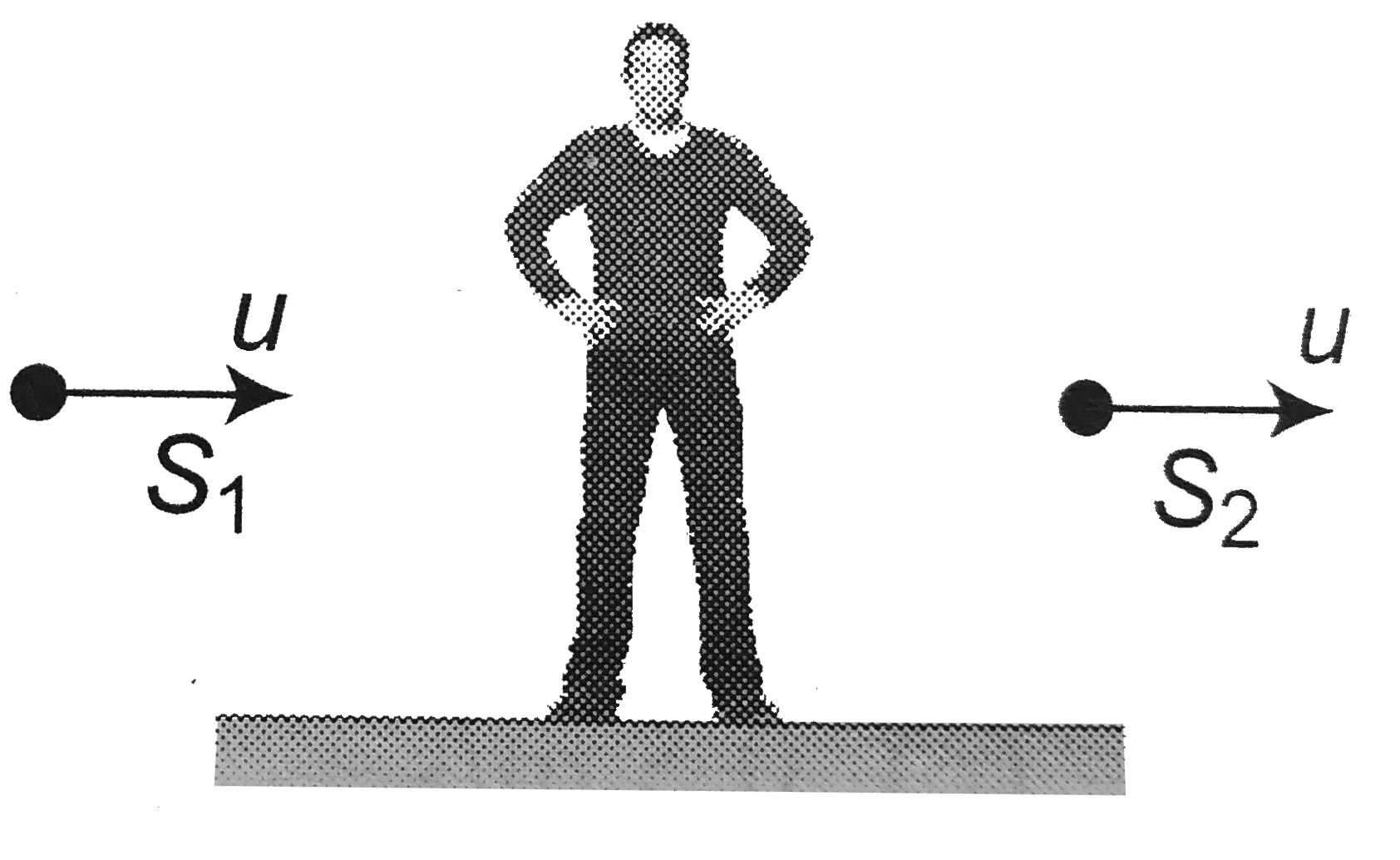Show that the approaches frequency f' of a source of sound moving with a speed vs towards a stationary receiver if f'=fcc−vs , where c is the velocity of sound and f is the frequency .
If the source of sound approaches the stationary listener with velocity vs , the number of sound waves f produced per second occupy the distance c−vs.
∴ Apparent wavelength , λ.=c−vsf
So, apparent frequency , f. = (c) /(lambda.) = (fc)/(c-v_(s))
Topper's Solved these Questions
- DOPPLER EFFECT IN SOUND BOOK - CHHAYA PUBLICATIONCHAPTER - DOPPLER EFFECT IN SOUND EXERCISE - EXERCISE
10 Videos
- DOPPLER EFFECT IN SOUND BOOK - CHHAYA PUBLICATIONCHAPTER - DOPPLER EFFECT IN SOUND EXERCISE - Very Short Answer Type Questions
8 Videos
- DOPPLER EFFECT IN SOUND BOOK - CHHAYA PUBLICATIONCHAPTER - DOPPLER EFFECT IN SOUND EXERCISE - CBSE SCANNER
2 Videos
- CIRCULAR MOTIONBOOK - CHHAYA PUBLICATIONCHAPTER - CIRCULAR MOTIONEXERCISE - CBSE SCANNER
11 Videos
- ELASTICITY BOOK - CHHAYA PUBLICATIONCHAPTER - ELASTICITY EXERCISE - CBSE SCANNER
10 Videos
Similar Questions
When a source of frequency f0 moves away from a stationary observer with a certain velocity, an apparent frequency f' is observed. When it moves with the same speed towards the observer, the observed frequecy is 1.2f'. If the velocity of sound is v, then the acutual frequency f0 is
View SolutionA source emitting sound of frequency 1000 Hz is moving towards an observer at speed vs=0.90v, (where v is the velocity of sound). What frequency III will be heard by the observer ?
View Solution
Knowledge Check
A source of frequency n is moving with a uniform velocity v towards a stationary observer. If the velocity of sound is V, then the change in frequency would be -
AvnV−vBvnVCVnV−vDvnV+vThe apparent frequency is f1 when a souece of sound approches a stationary obsever with a speed u and f2 when the observe approaches the stationary source with same speed. If v is the velocity of sound, then
Af1=f2Bf1>f2ifu<vCf2>f1ifu<vDf2>f1ifu<vWhen a source of frequency f0 moves away from a stationary observer with a certain velocity, an apparent frequency f' is observed. When it moves with the same speed towards the observer, the observed frequecy is 1.2f'. If the velocity of sound is v, then the acutual frequency f0 is
A1211f'B1112f'C76f'D67f'
A source emitting sound of frequency 1000 Hz is moving towards an observer at speed vs=0.90v,(where v is the velocity of sound) . What frequency will be heard by the observer ?
View SolutionIf a source of frequency n moving with velocity v crosses a stationary observer, then the change in the frequency of sound heard by the observer will be (velocity of sound = V)
View SolutionWhat should be the velocity of a sound source moving towards a stationary observer so that apparent frequency is double the actual frequency (Velocity of sound is v )
View Solution
Two sources S1 and S2 of same frequency f emits sound. The sources are moving as shown with speed u each. A stationary observer hears that sound. The beat frequency is (v=velocity sound)
View Solutionwhen a source of sound of frequency f crosses stationary observer with a speed vs(<< speed of sound v) , the apparent change in frequency Dea<af is given by
View Solution
